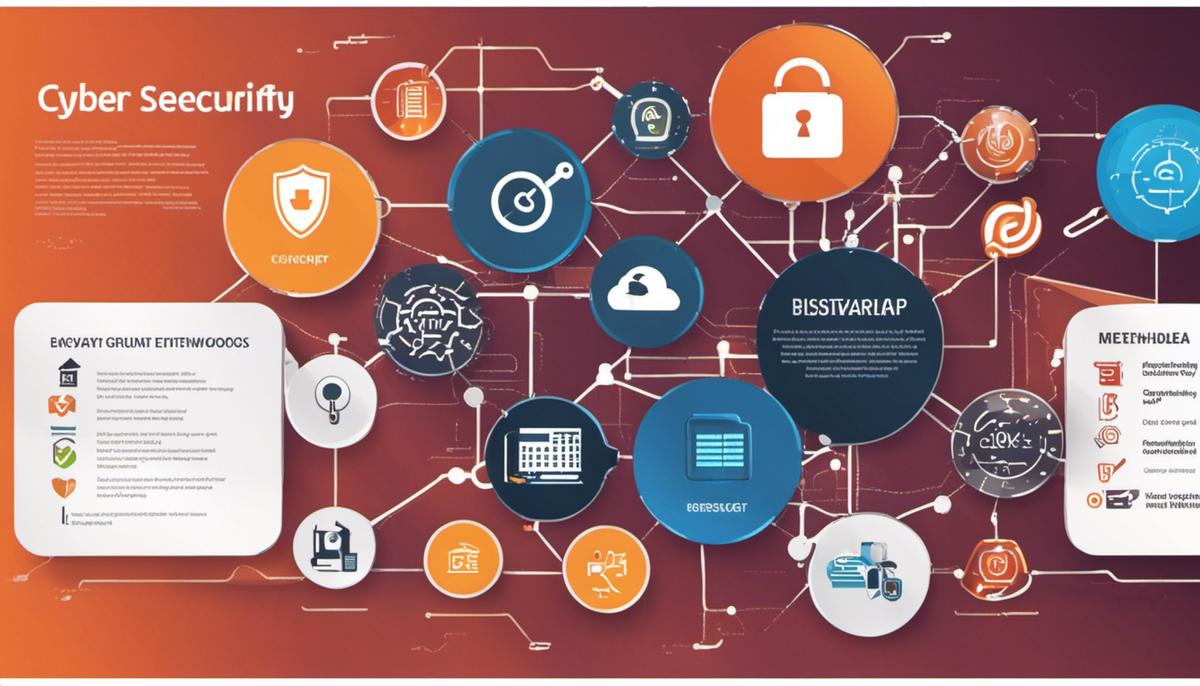Like a coin, the world of cyber security has two significant facets – the art of protecting systems, networks, and data and the ever-evolving challenges posed by culprits aiming to undermine it. From the theoretical foundations that act as the bedrock of this innovative field to strategies & methodologies designed to counteract potential threats, it’s paramount for us to immerse ourselves in these conversations, enrich our understanding, and arm ourselves with essential knowledge. Topics such as the implications of burgeoning technologies, real-world case studies of significant breaches, and speculative entrées into the future of cyber security will only heighten our awareness, shape our preparedness, and help us comprehend the evolving landscape of cyber security.
The Theoretical Foundations of Cyber Security
Unveiling the Foundational Theories in Cyber Security: A Deep Dive into the Realm of Digital Protection
Despite its relative novelty when compared to other established fields of study, cyber security remains an incredibly intricate realm, fortified by multiple theories that lay the structural groundwork for understanding, analyzing and addressing increasingly sophisticated cyber threats. The foundational theories that form the bedrock of cyber security, including cryptography, access control, and risk management, contribute significantly to the emergence of new technologies and strategies aimed at creating robust, impregnable digital ecosystems.
The building block of secure digital communication, cryptography, underlines the theory and artifice of converting plain text and data into unreadable, encoded information to ensure security. Heavily steeped in mathematics and computer science, it is a remarkable demonstration of the interplay of logical reasoning and abstract thought, a testament to the hybridity that cyber security represents. Cryptography serves as a deterrent for unwanted intruders, obscuring critical information making it extremely difficult, if not impossible, for cybercriminals to exploit.
Access control theory, another pillar of cyber security, focuses on defining who is allowed to access a particular resource and when. Its theoretical framework helps in shaping software, protocols, and technologies designed to safeguard resources by identifying, authenticating, and authorizing users. Systems employing access control techniques can effectively filter out unauthorized access, thereby protecting sensitive information from prying eyes.
Risk management theory has a pivotal role within the cybersecurity framework, helping organizations understand, assess, and mitigate threats and vulnerabilities that potentially jeopardize their digital infrastructure. This theory employs a set of quantifiable measurements to project potential losses, helping institutions prepare for harmful processes and individuals who often exploit their systems’ inherent weaknesses. Necessitating a comprehensive understanding of possible threats and system vulnerabilities, the theory of risk management is a crucial tool within the arsenal of cyber security.
Intersecting the disparate fields of computer science, mathematics, engineering, and even psychology, the domain of cyber security exemplifies the amalgamation of diverse theories and concepts. It is the marriage of craftsmanship and science, the harmony of ingenious innovations and meticulous scrutiny, all in pursuit of a common goal: securing our increasingly digitized world.
The multifaceted nature of this field means there will always be new threats to manage and, hence, new theories to develop and understand. The steadfast commitment to this quest for knowledge and the ceaseless battle against digital threats is a testament to the dedication and passion for this field. It is indeed a fascinating epoch in the continually evolving narrative of cyber security – a narrative shaped by these core theories that remain steadfast even as the digital landscape undergoes continual transformation.

Strategies and Methodologies in Cyber Security
Within the complex realm of cyber security, a dynamic mix of disciplines converge, underscored by the perpetual bid to outsmart mounting digital threats. To better navigate this intricate landscape, various frameworks and methodologies come to the forefront as essential tools. These encompass incident handling and response, vulnerability management, and privacy by design.
Foremost among these is Incident Handling and Response (IH&R). In the aftermath of a breach, rapid and well-coordinated response is crucial. The IH&R framework takes a proactive, rather than reactive, approach. This systematic process involves five steps: preparation, identification, containment, eradication, and recovery. Keeping the lines of communication open during each stage is paramount, enabling the rapid spread of critical information when it is most needed. The objective is not only to respond to security incidents efficiently but also to learn from them, thus strengthening future defenses.
Vulnerability Management (VM) is another indispensable approach within the cyber security context. This ongoing, proactive process aids in identifying, categorizing, prioritizing, and resolving software vulnerabilities. It aligns perfectly with the old saying, “A chain is only as strong as its weakest link”. In cyber security terms, a system is only as secure as its most vulnerable software component. A VM program should feature continuous monitoring, vulnerability assessments, and routine penetration testing as part of an enterprise-wide effort to enhance security resilience.
Lastly, the methodology of ‘Privacy by Design’ has emerged as another effective aspect of cyber security strategy. In stark contrast to traditional approaches that regarded privacy as an afterthought, this method integrates privacy into the very architecture of systems and processes. Seven fundamental principles underpin this methodology, ranging from a proactive stance on protecting privacy, default settings to maintain user privacy, the embedding of privacy in design, positive-sum rather than zero-sum (win-win) scenarios, security across the lifecycle of data, visibility, transparency, and finally, respect for user privacy.
Navigating the cyber security landscape is akin to a high-stakes game of strategy, with colossal implications for individuals, organizations, and nations alike. But with the right frameworks and methodologies in place, we can turn the tide in this ongoing battle against digital threats. Advancements are constant, and knowledge of defensive and offensive strategies is steadily accumulating. To keep pace with this evolution and the ever more ingenious advances of those who would compromise security, it remains essential that we continue refining and implementing these strategic methods.
A robust understanding of the critical role these frameworks and methodologies play within the sphere of cyber security not only expands the understanding of this complex discipline but reinforces the commitment to safeguarding the digital realm against evolving threats.

Challenges and New Frontiers in Cyber Security
As advancements continue to permeate every sector, the domain of cyber security is engaged in a relentless pursuit to safeguard the vast digital landscape. While foundational concepts like cryptography, access control and risk management uphold the discipline, emerging challenges and new frontiers are continually being explored.
Evidently, Incident Handling and Response (IH&R) emerges as a significant challenge rooted deeply in the realm of cyber security. As digital ecosystems become increasingly interconnected, the volume and complexity of incidents magnify. IH&R is more than a reactionary measure, it involves a prolific understanding of threat landscapes and adopting proactive measures. The prompt identification of threats, effective communication among stakeholders, efficient response to stabilize jeopardized networks, and the ability to learn and evolve from incidents are the crux of IH&R. This aspect calls not just for technological prowess but an astute cognizance to stakeholder management and awareness of legal and ethical imperatives as well.
Another dynamic forefront is the aspect of Vulnerability Management (VM). VM is not limited to identifying, categorizing, prioritizing and resolving vulnerabilities in software and hardware systems but extends to scanning the cyber horizon for potential weaknesses. As technologies evolve, so do the vulnerabilities in these systems, making it a perpetually moving target. The robustness of a digital infrastructure is contingent upon the effectiveness of its VM processes. Thus, methods and models that blend human intuition and machine learning are increasingly being sought to afford robustness.
Furthermore, the proliferation of data, the bedrock of the digital age, places monumental importance on privacy. This leads us to the intriguing concept of the ‘Privacy by Design’ methodology, an approach that advocates for privacy to be ingrained within IT systems, business processes, and network infrastructures from inception rather than being an added feature. Recognizing this as an essential right rather than an optional feature marks a radical shift in the design philosophy. With data breaches and identity theft being an omnipresent threat, this proactive measure renders an added layer of security, fostering trust among users.
In summation, cyber security is a dynamic sphere where challenges and frontiers are as varied as they are many. A blend of science and art, it requires an adaptive mindset that fosters innovation coupled with a grounded understanding of tried and tested foundational theories. As cyber threats persist to dawn upon the digital horizon with unfathomable sophistication, the field of cyber security stands endearing and undeterred. Delving deeper into fresh areas like IH&R, VM, and ‘Privacy by Design’ methodology ensures that cyber security remains an invigorating field of study and practice.

Case Studies on Significant Cyber Security Breaches
As the cyber security landscape unfolds, showing its intricate nuances and layered complexities, the glaring tales of some notable cyber security breaches burn through the academic discourse. These breaches are not merely missteps or lapses; they embody a profound understanding of the evolving cyber vulnerabilities and threats, offering important lessons for broadening our comprehension and shaping future strategies.
While the introduction of the internet heralded an era of vast opportunities, it also laid bare a new flank for adversaries to exploit. One of the earliest notable breaches, the 1988 Morris Worm, serves as a stark reminder of the vulnerability that stems from seemingly benign activities. Rather than malicious intent, this was a case of experimental curiosity gone awry. A mere 99 lines of code written by Robert Morris to gauge the size of the internet exploited vulnerabilities in UNIX systems, causing a shutdown of roughly 10% of the internet. The lesson drawn underscored the need for introspective evaluation – to understand and continually patch our own system vulnerabilities.
Fast forward to 2013, when Yahoo was hit by one of the largest breaches in history; personal information belonging to nearly three billion users was stolen. The breach was aggravated by delayed detection and response, resulting in significant reputational and financial damage. The intrusion, traced back to state-sponsored actors, emphasized the increasing stakes and geopolitics entwined in cyberspace and the imperative need for robust incident detection and rapid response mechanisms.
In 2014, the world bore witness to the Target breach, where credit and debit card details of 40 million customers were stolen by exploiting vulnerabilities in point-of-sale systems. Unprecedented in scale, the breach unveiled the multiplying vectors of cyber attacks and the cascading effects of supposedly isolated system vulnerabilities. The lesson was clear: in a connected world, holistic, integrated security models and proactive rather than remedial vulnerability management become indispensable.
The 2017 Equifax breach again brought the spotlight on an easily avoidable vulnerability. A patch was readily available months before this, yet, 145.5 million consumers had their data compromised. The lesson? Reiteration of a seemingly basic but critical axiom—timely patching of known vulnerabilities is crucial in securing systems.
Cybersecurity breaches, from novice experiments to professional, state-sponsored attacks, reflect a sobering truth – no entity, regardless of its size or sophistication, is impervious to breaches. These breaches serve as a testament to the relentless evolution and strategic fluidity of cyber threats that mandates an equally persistent vigilance and agile defense. As academics and scientists committed to this vital field, these breaches deepen the understanding of emerging challenges, and illuminate the path towards robust, resilient and agile cyber security frameworks.

Future Trends and Predictions in Cyber Security
Future trends in cyber security promise to be just as dynamic and complex as the challenges we face today.
Decades of academic research and industrial experience have provided us with valuable techniques to protect our digital assets. However, the digital landscape is incredibly dynamic, and the ability to adapt effectively to change is of paramount importance.
In the coming years, one of the high-potential areas of cyber security research and development lies in the realm of post-quantum cryptography. As quantum computing gains traction, it threatens to unsettle the foundation of numerous cryptographic algorithms. Therefore, creating and implementing quantum-resistant algorithms before the mature advent of quantum computers is of extreme importance.
The advent of 5G and near-future 6G technologies will drastically increase the potential attack surface for cyber threats. This is because of the inclusion of a massive number of Internet of Things (IoT) devices. Security needs to be embedded at each layer of IoT ecosystems to provide comprehensive protection against potential threats. Holistic and multi-layered security frameworks, supplemented by Artificial Intelligence for rapid threat detection and mitigation, is likely to be a chief future trend.
Artificial Intelligence and Machine Learning in cyber security, often referred to as Security Automation and Orchestration (SAO), is another future trend that heralds a significant transformation in the way security operations are conducted. Anticipating attacks, detecting threats, and taking preventative measures will become highly efficient and effective. However, it is essential to note that malicious actors might also leverage these technologies to carry out sophisticated attacks.
Furthermore, the field of behavioral analytics within cyber security is likely to gain increased focus. Leveraging user and entity behavior to create baseline profiles and subsequently using these for anomalous detection will be pivotal for proactive security measures.
With the increasing accessibility and connectedness of the world, cyber conflict and cyber diplomacy are burgeoning areas that are inextricable from technological advancements. Cyber warfare, espionage, and geopolitical power struggles are likely to constitute a significant part of the future cyber security landscape.
Lastly, and most importantly, efforts in cyber security education and awareness are anticipated to intensify to equip individuals and organizations with the knowledge and tools to protect their digital assets. This aligns with the significant prediction that our best defense against cyber threats is a well-informed and proactive user base.
In conclusion, the challenge lies in the fact that the field is a continuous learning process that evolves in parallel with technological advancements. While we anticipate these future trends in cyber security, it is of absolute necessity to continue our exploration and adaptation to the intriguing depths and corners of this intricate digital world.

With the burgeoning advancements in technology, the arena of cyber security remains in a perpetual state of evolution. As we project towards the future, an increased use of AI and machine learning in cyber security, alongside emerging technologies like quantum computing and blockchain, directly implicates an amplified need for awareness and understanding in this field. Revisiting past cyber security breaches not only provides learning opportunities but also emphasizes the significance of strong security systems. The critical confluence of theoretical concepts, practical strategies, and prospective trends underscores the significance of cyber security in our current digital age. Embracing this knowledge allows us not just to navigate but also thrive in an increasingly interconnected world teetering on the edge of the technological horizon.
